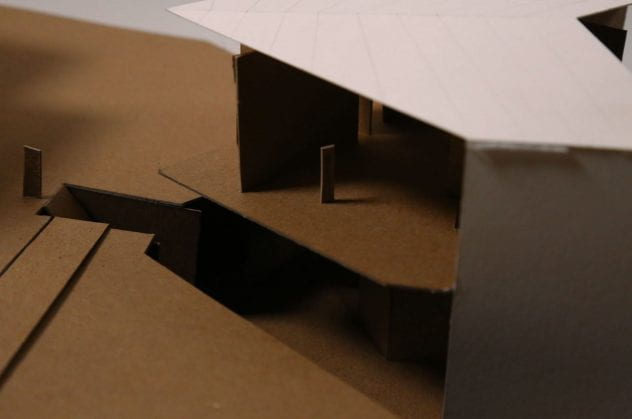For the final project, we were tasked to design a music school for Community Music Works in Fort Greene, Brooklyn.
CMW is a community-based music program located originally in Providence, Rhode Island. Their mission is “to create cohesive urban community through music education and performance that transforms the lives of children, families, and musicians”. Children are admitted to the school on a lottery-based system and are also typically from low-income neighborhoods. CMW wishes to improve the effectiveness and build of their arts education by (1) sharing professional development and learning opportunities, (2) increasing visibility of community arts programs for youth, and (3) identifying opportunities and financial support for member organizations.
Fort Greene has a rich history and present. It was originally a US Navy Yard and many Irish immigrants from Ellis Island resided in the area. Housing projects were built to accommodate temporary living space for the navy seals and their families. A Catholic church was also built for these Irish immigrants. A few years later, the first colored school in New York was built and later turned into a public school for the primarily African American residents. In addition to the school, Auburn Assessment Center (a family homeless shelter), Cumberland Hospital, and Brooklyn Public Library were constructed.
Required Program:
- indoor + outdoor performance space
- pot luck kitchen
- pot luck dining
- individual (8) + small (6) group instruction spaces
- large practice space (1)
- music instrument storage
- administration offices
- temporary performance storage
- CORE
Based on my program flow mapping and my cut,lift,+fill project, I decided to continue with the idea of flow and path. In my design for the CMW music school, I focused on the idea of flowing through music.
The musician would find an opening on the (street level) surface and dip down into an experience of music (auditorium space). Then when leaving that space, they would move outdoors to a calm outdoor space and take a breath before continuing into another experience of music.
The path connects the BPL to the playground of PS 67.
One of the main tasks of this project was to engage the community with the site. As seen in the roof plan, there is a green space surrounding the perimeter of the structure. I interpreted community gathering space as a space for people to relax and read, engage in a garden activity, or enjoy a small outdoor performance.
Since the existing site was a garden space for the school, I thought it was important to leave that aspect as gardening and green space tends to encourage community-gathering and community-building.
There are two geometric forms (ideally made of concrete, glass and wood) that indicate the school of music. Potluck dining, kitchen, storage, office space, and mechanical room are located below the street level surface area.
For the structural support, I decided to use a wooden honeycomb framing system that would wrap around the two forms and continue into the ground.






















